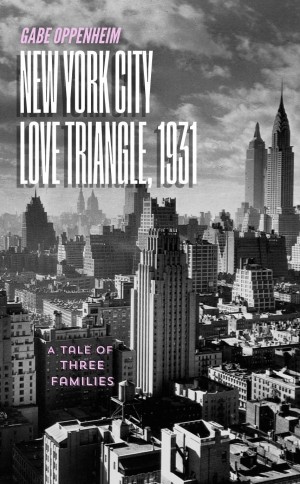Madam is the biography of Polly Adler (1900−1962), the most infamous and influential madam in Jazz Age New York. Her 1953 memoir, A House is Not A Home, sold 2 million books and became a 1963 movie starring Shelley Winters. More than a biography, this is a colorful and unusual history of Jewish life told through the perspective of a “good Jewish girl” from a Russian shtetl who immigrated to Brooklyn, and rose to become “the Female Al Capone” and one of the most renowned Jewish-American women in the 20th century. Her brothels were underworld salons that catered to everyone from the Vanderbilts and the Rockfellers to Walter Winchell, Frank Sinatra, Desi Arnaz, the Algonquin Roundtable, Dutch Schultz and Meyer Lansky, and, it was rumored, Franklin D. Roosevelt. The New York Times Book Review praised Madam as a “fast-paced tale of radical, willful transformation,” and “a breathless tale told through extraordinary research.” Debby Applegate’s first book won the 2007 Pulitzer Prize for biography and she spent the next 13 years working on Madam.

Nonfiction
Madam: The Biography of Polly Adler, Icon of the Jazz Age
September 1, 2021
Discussion Questions
Courtesy of Debby Applegate
- Most people have a fairly glamorous vision of the Jazz Age, gleaned from reading The Great Gatsby in high school, and watching old gangster movies and screwball comedies. How did Madam change your vision of those years?
- Polly said: “If I had all of history to choose from, I could hardly have picked a better age in which to be a madam.” What do you think she meant?
- All sorts of women worked for Polly —from full-time professional hustlers who lived in her brothels to aspiring actresses and singers who secretly worked as occasional call girls until they got their big break. Overall, would you say that Polly was helping or harming the women who worked for her?
- What did you make of the fact that so many men, of all walks of life, used Polly’s services? Do you think that men today would be as likely to go to a brothel or hire a call girl as they were earlier in the 20th Century? Has the “double standard” faded or is it still a common belief?
- Did you find Polly likable or sympathetic? Is it possible to overlook – or at least understand —the fact that she chose to be so deeply immersed in crime and vice and various forms of exploitation?
- She was arrested well over a dozen times, but only went to prison once, for one month with five days off for good behavior. If it were up to you, would you say she should have spent more than 25 days in prison?
- Almost all of the police who appear in Polly’s life are corrupt in various ways —taking bribes, having sex with prostitutes (for free!), protecting Polly from arrest, befriending bootleggers and gamblers. How did reading these stories of corrupt cops affect your thinking about policing?
- Do you feel this less savory aspect of Jewish history has been glossed over in the myth of the model minority?
- Polly always craved social stature and respectability and she clearly wanted to be remembered by posterity. She saved trunks of mementos, scrapbooks, letters and reel-to-reel recordings of her memories. And in the 1950s, Polly published a blockbuster memoir, A House is Not a Home, that sold 2 million copies. So, why do you think that we remember her male criminal colleagues — sociopathic gangsters like Bugsy Siegel, Meyer Lansky, Lucky Luciano and Legs Diamond —and turned them into American mythic figures — but she has been mostly forgotten by history until now?
- Polly liked to cast herself as a classic Horatio Alger American success story, but with an unexpected twist. Is that a fair way to describe her? Or would it be more accurate to describe her as an American tragedy? Would say her story had a “happy ending”?

Jewish literature inspires, enriches, and educates the community.
Help support the Jewish Book Council.



